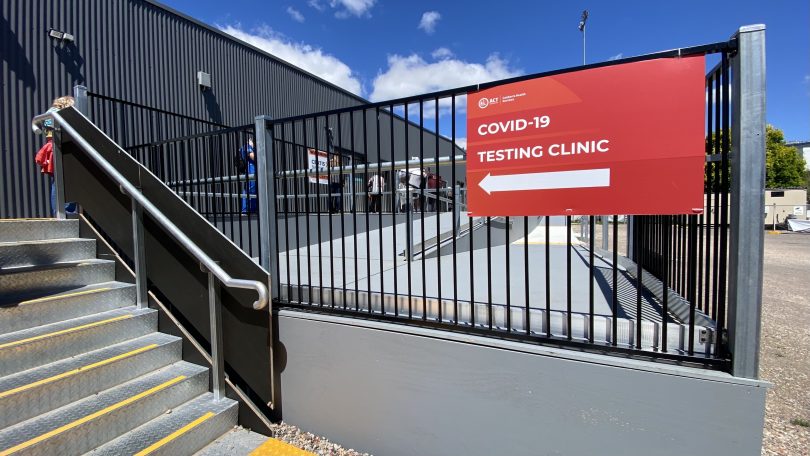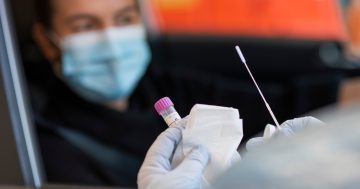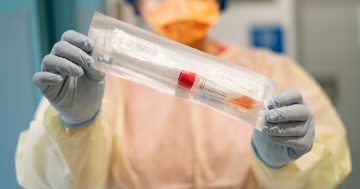
COVID-19 testing clinic. Photo: Michelle Kroll.
As we battle through the ACT’s first outbreak of COVID-19 within the community, you’ll hear the Chief Health Officer, the Health Minister and other authorities give directions for close, casual and secondary contacts.
But what do these contact categories mean?
It’s important to understand the differences for a couple of reasons. They determine whether you need to quarantine and for how long.
But importantly, they’re also helping to reduce pressure on the ACT’s testing facilities as we process thousands of high-risk contacts associated with transmission sites.
ACT Health is prioritising people for testing according to their level of risk. For the past week, people who are low risk have been urged not to flood testing centres.
The ACT Government’s COVID-19 website has extensive details on contact levels, quarantine requirements, testing and exposure sites.
The list of exposure sites is now updated twice daily and classifies contacts into close, casual and secondary. It also has a location search so you can enter your suburb or a specific venue to check its status. There’s a map of Canberra with pin drops for exposure sites.
Close contacts have a high risk of infection. ACT Health says this could be because they spent a long time with, or were in a confined space with a confirmed case.
Close contacts are required to complete the ACT Contact Declaration Form, immediately quarantine, get tested for COVID-19 as advised by ACT Health and remain in quarantine for 14 days or until advised further by ACT Health, even if you get a negative test result.
This is because the virus can take up to 14 days to appear. Even if you test negative not long after visiting a close contact exposure site, you may still develop the virus later. ACT Health will advise you when your quarantine has ended. Further information for close contacts about quarantine can be found here.
Casual contacts have a lower risk of exposure. They may have been outside or spent a short time in a large venue with the confirmed case.
If you have been to any of the locations identified as a casual contact location at the dates and times specified, you must complete the ACT Contact Declaration Form; immediately quarantine and get tested for COVID-19 as advised by ACT Health.
However the testing and quarantine conditions are a little different for casual contacts who are at slightly less risk.
If you were at the casual contact location less than four days ago, you will need two tests. You need to get a test as soon as possible and a second test on day 5 after you were at the casual contact location. The day you were at the exposure site is counted as Day Zero and the next day is Day One
You need to remain in quarantine for the whole time, until you receive a negative result from the second test.
However, if you were at the casual contact location four or more days ago, you only need to get one test. You should get tested as soon as possible. You will need to remain in quarantine until you receive a negative result. You can find out more about quarantine for casual contacts here. Get tested again for COVID-19 if you experience any symptoms, no matter how mild.
Secondary contacts have been close to a close contact since they were exposed to COVID-19. The advice differs according to whether the close contact is a member of your household or not.
If you live with the close contact, you must quarantine until both you and they are released from quarantine by ACT Health. You should maintain separation from the close contact during the quarantine period.
If you don’t live with the close contact, you must quarantine until the close contact has a COVID-19 test and receives confirmation of a negative result. As long as you have had no contact with the close contact since their test you can then leave quarantine.
You can find out more about quarantine for secondary contacts here.
ACT Health has a hotline for people who are in isolation, but be warned that it may take a long time to reach an operator. There could be more than 80 people in front of you on busy days and there’s a wealth of information online.





















